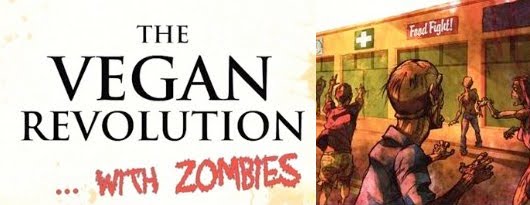I have lots of questions about this book and this wider project. Thankfully I will be interviewing the creators soon for the podcast so stay tuned for that.
Last year I happened upon a graphic novel adaptation of The Octavia Butler Sci-fi horror classic Kindred at the library. Now to my great shame as a Sci-fi bibliophile I had never read Kindred before. So I was excited to read it, but I had no ability to compare it to the novel. The Graphic novel of Kindred was amazing, the story was engrossing and disturbing. The packaging beautiful and it came with a tease for more adaptations of Octavia Butler’s work.
Next up was Parable of the Sower a classic I read probably 15 years ago. This time I could judge the work against the source material. While the book at the heart here was nominated for Locus and Nebula awards is still underrated as a predictive dystopia that launched a trilogy that sadly will never be finished. Butler died while working on the third book.
If you are not familiar with Octavia Butler let’s back up and talk about her. In 1995, she became the first science fiction writer to receive the MacArthur Foundation "Genius" Grant, which by the way was just given to another African American Woman in the genre N.K. Jemison. Butler is not the first science fiction author whose genius has been fully realized after their death. While the genre currently has several black women who are huge successes from Jeninsin to Nnedi Okorafor it was Butler who broke that glass ceiling first.
She was an important voice to the genre not just because of who she was. Her work was groundbreaking and powerful based on the strength of the stories she was telling and the undeniable voice she had.
I don’t know whose idea it was to produce beautiful looking and packaged graphic novels based on her work but thank you, thank you.
Parable of The Sower the novel was written in 1995, and when we see how close to her nightmare we have become it seems more important than ever. I have often compared this first book to King’s The Stand in concept, but the execution in my opinion Sower is a better novel. It has the end of the world mixed with a spiritual calling that is tested by the horrors. It has a group of people walking the wastelands, in this case just California. Sower is shorter, more focused, and clearly comes from a person who grew up with a very different point of view.
Parable of the Sower is the story of Lauren Olamania who lives in a gated LA Ghetto during America’s economic collapse. The reasons are not fully expressed they don’t need to be. It always felt to me and this might be my bias that the reasons are environmental. None the less America is falling apart and one of the most interesting things is that corporations have bought towns, and indentured servitude has become legal.
After a massive fire burns down their neighborhood Lauren and friends take off up the coast to try and make it to Canada. Along the way they face horrors and Lauren develops the first ideas of religion she calls Earthseed with the vision that God is Change, that the human race needs change and needs to escape into the stars. These ideas are hinted at here but better explored in the sequel Parable of the Talents.
So how did Duffy and Jennings do adapting this classic? Well, this is an intense book with huge themes that are expressed deftly in minor details. This graphic novel is an excellent translation and important work that will get the story and ideas out there. No matter how well it is done I doubt Jennings and Duffy would think they had created a substitute.
That said this graphic novel makes up for one of the few negatives of the narrative format. The novel was written as journal entries and at the time it broke some of the suspense. The creators smartly kept this idea in the text through narrative word bubbles that looked like tiny pastes of notebook paper and styled it has handwritten. So we don’t lose Lauren’s inner monologue. That said because it is a graphic novel we don’t have the story unfolding as “Last night this happened” That is one benefit of the format.
The artwork is powerful and has a painted somewhat abstract feel. The panel and Page design is great, it flows and most importantly as a fan of the novel it felt right to me. Between Lauren’s journals and Earthseed parables, there are more words on the page than some graphic novels. That said it does a great job of telling this unique story.
The book comes with a beautiful hardcover layout, even under the slipcover. The introduction by author Nalo Hopkinson is amazing. The whole package is impressive. Big Thumbs up.


No comments:
Post a Comment